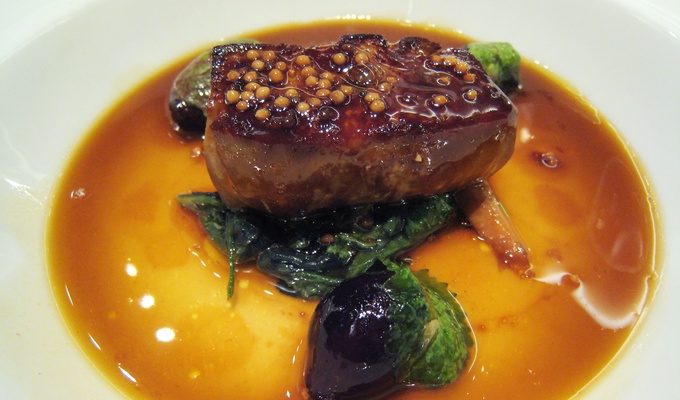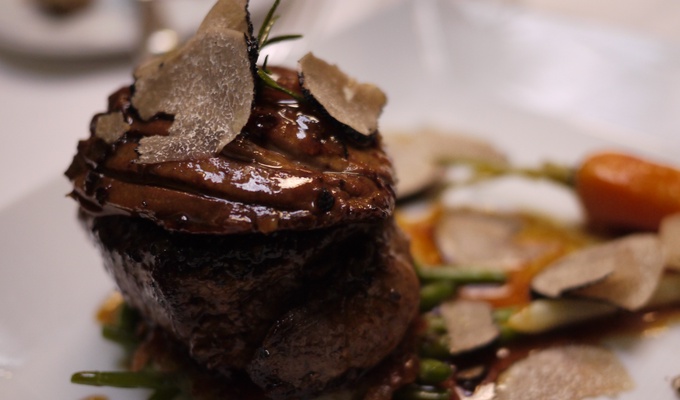Foie gras is a specialty food product made of the liver of a duck or goose. According to French law, foie gras is defined as the liver of a duck or goose fattened by gavage.
Foie gras is a popular and well-known delicacy in French cuisine. Its flavour is described as rich, buttery, and delicate, unlike that of an ordinary duck or goose liver. Foie gras is sold whole or is prepared into mousse, parfait, or pâté, and may also be served as an accompaniment to another food item, such as steak. French law states that "Foie gras belongs to the protected cultural and gastronomical heritage of France."
The technique of gavage dates as far back as 2500 BC, when the ancient Egyptians began keeping birds for food and deliberately fattened the birds through force-feeding. Today, France is by far the largest producer and consumer of foie gras, though there are producers and markets worldwide, particularly in other European nations, the United States, and China.
Gavage-based foie gras production is controversial, due mainly to the animal welfare concerns about force-feeding, intensive housing and husbandry, and enlarging the liver to 10 times its usual volume. A number of countries and jurisdictions have laws against force-feeding, as well as the production, import, or sale of foie gras.

